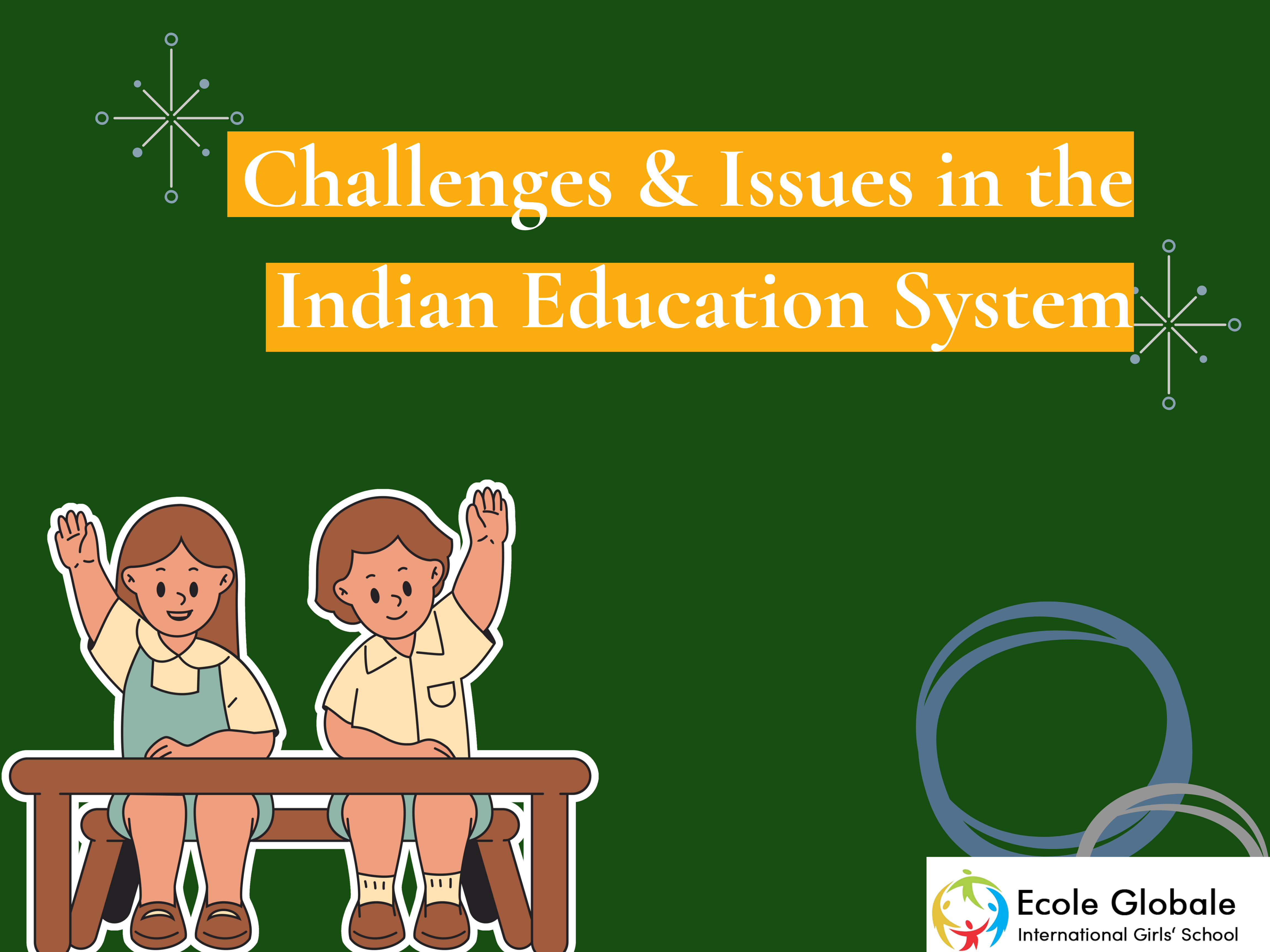The Indian education system, one of the largest in the world, caters to millions of students across diverse regions. Despite significant advancements, the system faces numerous challenges that impede its ability to provide quality education to all. This article explores these challenges, compares insights from competitors, and proposes solutions to create a more equitable and effective educational landscape in India.
Overview of the Indian Education System

The Indian education system, rooted in both ancient traditions and modern advancements, has evolved significantly since the British colonial era. It is structured into several levels: pre-primary, primary, elementary, secondary, and higher education. The Constitution of India guarantees the Right to Education for children aged 6 to 14 years, aiming to provide free and compulsory education.
Challenges in the Indian Education System

Teacher-Student Ratio
According to UNESCO’s State of the Education report for India 2021, there are 11.16 lakh teaching positions vacant in schools. This shortage, coupled with teachers’ administrative burdens, diverts focus from teaching. Government teachers’ job security, regardless of performance, further diminishes accountability.
Allotment of Funds
Despite recommendations for India to spend 6% of its GDP on education, only 3.1% was spent in 2019-20. Corruption and mismanagement often result in insufficient funds reaching schools, affecting libraries, labs, and infrastructural facilities.
Expensive Higher Education
Higher education, especially in specialized institutions, remains expensive. For instance, IIM charges Rs. 2 lakh per semester for MBA classes, making it unaffordable for many. The privatization of advanced education has led to high dropout rates.
Lack of Infrastructure
Poor hygiene, lack of toilets, drinking water facilities, electricity, and playgrounds are significant issues. The 2016 Annual Survey of Education Report highlighted that only 68.7% of schools had usable toilet facilities, and 3.5% had none.
High Dropout Rates
Dropout rates are high in primary and secondary education levels. Factors include poverty, long distances to schools, child marriages, and cultural biases. According to the ASER report 2012, dropout rates in rural India are alarmingly high.
Neglect of Regional Languages
The preference for English as the medium of instruction in many private schools disadvantages students from rural backgrounds and government schools, who are not well-versed in English.
Outdated Curriculum and Lack of Practical Knowledge
The curriculum often focuses on rote learning rather than practical knowledge. The National Policy on Education 2020 aims to shift towards skill-based learning, addressing previous educational policies’ shortcomings.
Problem of Brain Drain
Talented students often seek opportunities abroad due to the lack of deserving positions in India. This “brain drain” hampers the country’s development. The National Skill Development Mission aims to train 400 million people by 2022 to mitigate this issue.
Solutions and Recommendations

Improving Teacher-Student Ratio
Hiring more teachers and reducing their administrative workload can significantly improve the quality of education. Regular performance evaluations and accountability measures for government teachers are essential.
Increased Funding and Efficient Allocation
Allocating at least 6% of GDP to education and ensuring funds reach their intended destinations can enhance infrastructure and resources in schools. Transparency and anti-corruption measures are crucial.
Making Higher Education Affordable
Scholarships, financial assistance, and subsidized education can make higher education accessible. Encouraging private sector investment in education can also help reduce costs.
Enhancing Infrastructure
Investing in basic facilities like toilets, drinking water, and electricity is vital. Regular audits and community involvement can ensure maintenance and improvements.
Reducing Dropout Rates
Providing incentives, such as scholarships and mid-day meals, can encourage students to continue their education. Addressing cultural and economic barriers is also crucial.
Promoting Regional Languages
Developing standardized publications in regional languages and providing training for teachers in these languages can help bridge the gap for rural students.
Updating Curriculum and Emphasizing Practical Knowledge
Regularly updating the curriculum to include practical skills and competencies relevant to the modern job market is essential. Incorporating technology and experiential learning methods can make education more engaging.
Retaining Talent and Reducing Brain Drain
Providing competitive opportunities and creating a conducive environment for research and innovation can retain talent within the country. The National Skill Development Mission should be expanded and adequately funded.
Schemes and Campaigns for Education in India
Sarva Shiksha Abhiyan
Launched in 2001, this scheme aims to strengthen the infrastructure of schools and ensure “Education for All.”
National Programme for Education of Girls at Elementary Level
Focused on the “Hardest to Reach” girls, this program aims to ensure that girls, especially those not in school, receive education.
Rashtriya Madhyamik Shiksha Abhiyan
This scheme enhances secondary education by increasing enrollment rates and providing schools within reachable distances from homes.
Mid-Day Meal Scheme
Providing one meal to children in government schools, this scheme aims to improve enrollment and attendance rates.
Beti Bachao Beti Padhao
This initiative focuses on promoting girls’ education and addressing gender disparities in education.
Conclusion
The Indian education system, while progressing, faces numerous challenges that need immediate attention. By addressing issues such as teacher shortages, inadequate funding, outdated curricula, and high dropout rates, India can create a more equitable and effective education system. Implementing the proposed solutions and enhancing existing schemes can ensure quality education for all, paving the way for a brighter future.









